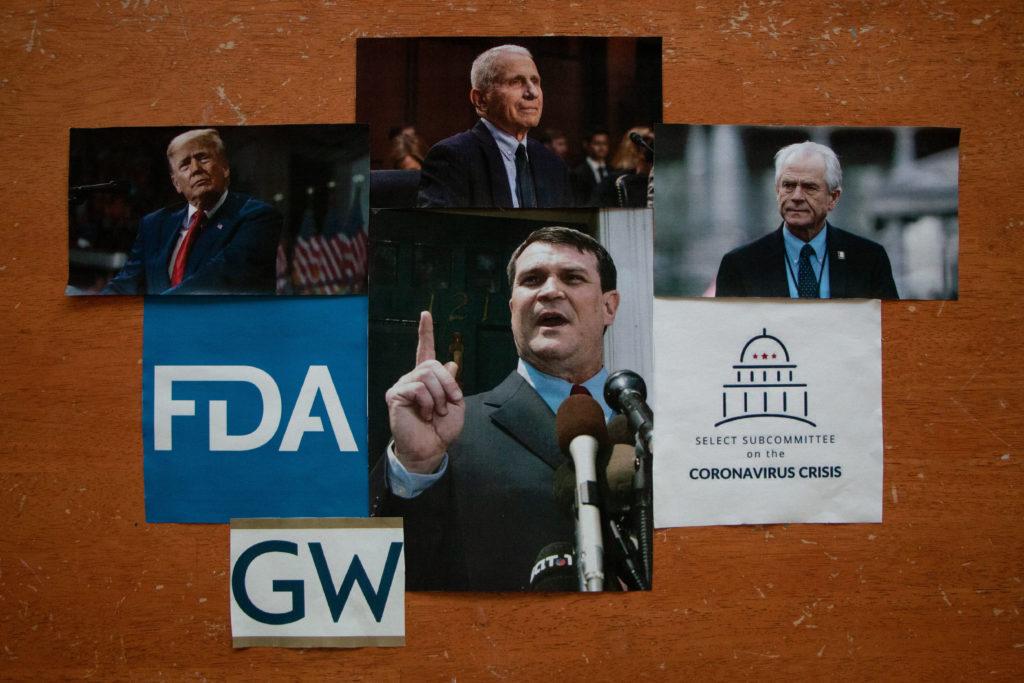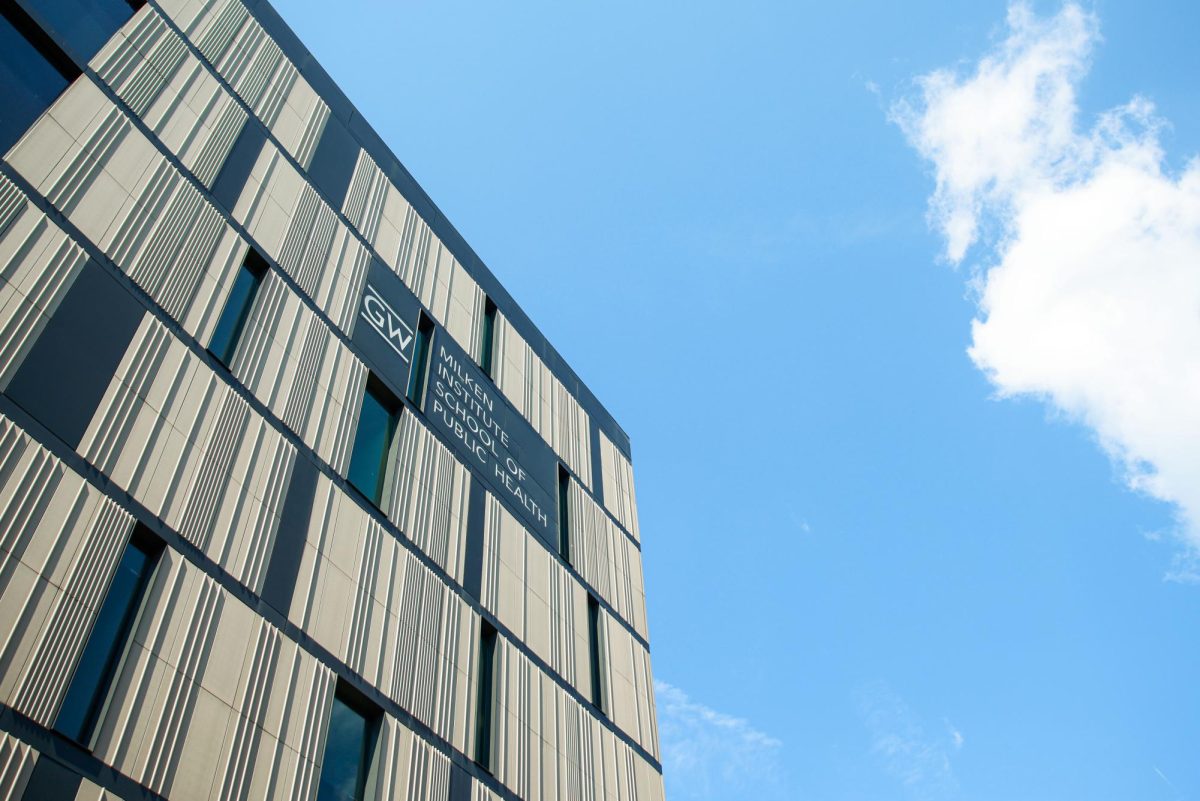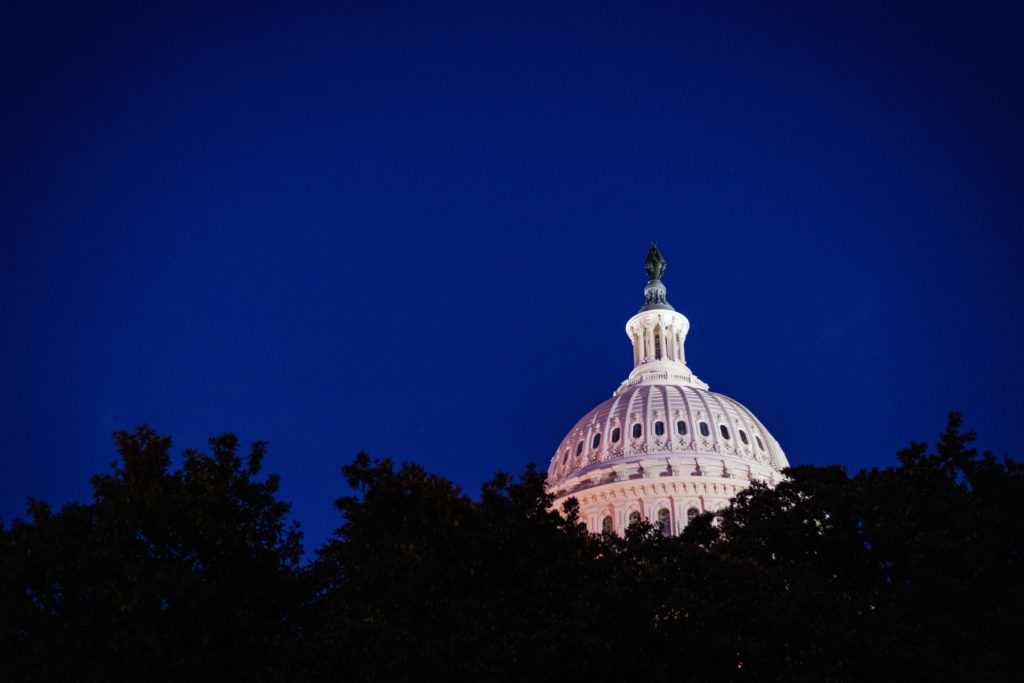A former professor is at the center of a federal investigation into the use of a controversial drug during the early stages of the COVID-19 pandemic, a probe that has revealed White House communications linked to his GW email.
Documents in a U.S. House of Representatives select subcommittee report released late last month show that Steven Hatfill, a former adjunct professor of emergency medicine, used his GW email to conduct business regarding controversial COVID treatments while helping the administration of former President Donald Trump respond to the COVID outbreak. A subpoena issued to Hatfill from the same Select Subcommittee on the Coronavirus Crisis in September 2021 also cited his attempts to overturn the 2020 presidential election, according to the subcommittee.
Hatfill worked at GW as a professor in 2020 while working as a full-time coronavirus response volunteer within the White House. University spokesperson Tim Pierce said Hatfill has since resigned from GW after joining the University as an adjunct professor of emergency medicine in 2007.
Hatfill began working with the White House in 2020 when Peter Navarro, the director of the Office of Trade and Manufacturing Policy, hired him during the outbreak as his senior medical adviser and a full-time volunteer to assist with the federal COVID response, according to the Select Subcommittee report. The report revealed Hatfill sent emails related to his work for the White House from his GW account and pushed for a targeted investigation of federal officials who wouldn’t authorize the emergency use of hydroxychloroquine – a drug that decreases immune responses in the body and is typically used to treat malaria – against COVID-19.
Pierce declined to share when and why Hatfill resigned from his position. Pierce also declined to say whether officials were aware that Hatfill used his GW email to conduct White House business or if GW provided the subcommittee with Hatfill’s emails.
Hatfill did not return a request for comment. The Office of Donald J. Trump also did not return a request for comment.
Here’s a chronological breakdown of Hatfill’s tenure with the White House:
Advocacy for hydroxychloroquine
Navarro and Hatfill worked with officials from Henry Ford Health System – a nonprofit healthcare organization based out in Detroit, Michigan – in June 2020 to reauthorize the use of hydroxychloroquine to treat COVID after the Food and Drug Administration revoked Emergency Use Authorization June 15, according to the report.
The FDA first authorized a EUA for hydroxychloroquine for use in COVID treatment March 28 but revoked it less than three months later in a statement that said the drug was “unlikely” to be effective in treating COVID and the potential risks of using the drug outweighed the benefits.
The FDA released a safety warning for the drug in April of 2020 after reports of abnormal heart rhythms were linked to the drug.
The agency’s decision to authorize an EUA for hydroxychloroquine against COVID, a treatment widely touted by Trump, was met with backlash from critics and former FDA officials who said the agency conformed to the politics of the White House, and evidence for the drug’s effectiveness was “scant,” according to a Washington Post report.
The report states Hatfill drafted a new EUA request for hydroxychloroquine in late June 2020 and asked the Henry Ford Health System to submit the request so someone affiliated with the White House would not be listed on it. Henry Ford Health System submitted the request to the FDA July 6, which the agency denied the request a month later.
While concealing his affiliation with the White House, Hatfill used his GW email account, his personal email account and third party intermediaries to gain support for hydroxychloroquine and to conduct business, which he called “work from the shadows,” the report states.
The report found Hatfill discussed the federal pandemic response on those personal email accounts without “properly preserving the records” – using a secure email or copying a government official, as the Presidential Records Act requires individuals who work with the White House to do.
Hatfill also promised millions in government funding to Henry Ford Health System and researchers at the University of Florida and Texas Tech University if they conducted studies about using hydroxychloroquine for treatment of COVID, according to the report.
Emails and documents obtained from the subcommittee found that Hatfill devised a plan for Navarro to call on the Department of Justice to investigate Anthony Fauci, the director of the National Institute of Allergy and Infectious Diseases, his staff and other officials like former FDA Commissioner Steven Hahn to “shut them up for a bit.”
Subpoena from the Select Subcommittee
The House subcommittee subpoenaed Hatfill in September 2021 because he “refused to provide” documents the subcommittee needed to investigate the federal government’s COVID response. Subcommittee spokesperson Graeme Crews said Hatfill turned over the documents to the subcommittee after the subpoena was issued.
The subpoena from the subcommittee stated Hatfill “misleadingly downplayed” his role in the federal government’s pandemic response in communications with the subcommittee, which led to the subpoena for his documents.
Hatfill’s emails obtained during the subcommittee’s investigation showed he received an office space inside of the White House in addition to an Executive Office of the President email account and spent up to 18 hours a day, seven days a week working on the government’s pandemic response.
Hatfill sent more than a thousand messages to senior officials in the White House, federal agencies and private companies regarding the pandemic response, supply chain issues and COVID supply procurement from his GW email, according to the subpoena.
Hatfill told an unnamed GW colleague that coronavirus became a secondary focus of the Trump administration while White House officials worked to overturn the results of the election, according to an email released by the subcommittee. Hatfill sent the email Jan. 5, 2021, one day before a pro-Trump mob stormed the Capitol in an effort to prevent certification of the election.
“Because the election thing got out of control,” Hatfill’s said in the email. “I go where my team goes.”
Hatfill’s COVID drug subpoena is not the first time he’s been under federal investigation during a public health emergency.
The Department of Justice wrongly suspected that Hatfill was behind the 2001 anthrax attacks, when letters laced with anthrax bacteria killed five Americans and sickened 17 others after 9/11. Investigators concluded that Hatfill was one of the few American scientists with working knowledge of the bacteria at the time, but the Federal Bureau of Investigation dismissed him as a suspect in 2007.
The DOJ also considered terrorist organization al-Qaida or biodefense engineer Bruce Edwards Ivins while investigating the anthrax-laced mail, but no arrest was made for the attacks.
Hatfill sued the DOJ in 2003, before receiving a $5.8 million settlement.
2020 presidential election results
Hatfill admitted to sending Navarro plans to investigate election fraud after President Joe Biden won the 2020 presidential election, according to emails obtained by the subcommittee. He said in the emails that he “shifted over to the election fraud investigation in November,” even though Navarro hired him to assist with the COVID response.
“Now with the election so close, COVID is taking a back-seat, yet the disease is rearing its ugly head again and there are some frightening rumors about the virus coming out of Bulgaria at the moment,” Hatfill said in an email in October 2020.
During the months of November and December 2020, Hatfill used his GW email to forward Navarro multiple leads about election and voter fraud that Hatfill believed would produce evidence proving ballot fraud, according to emails from the subcommittee.








